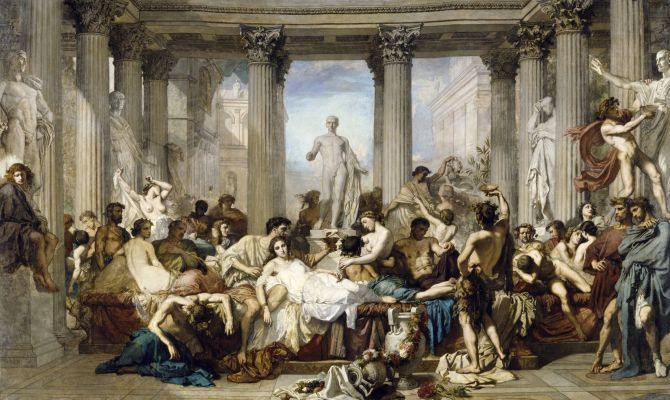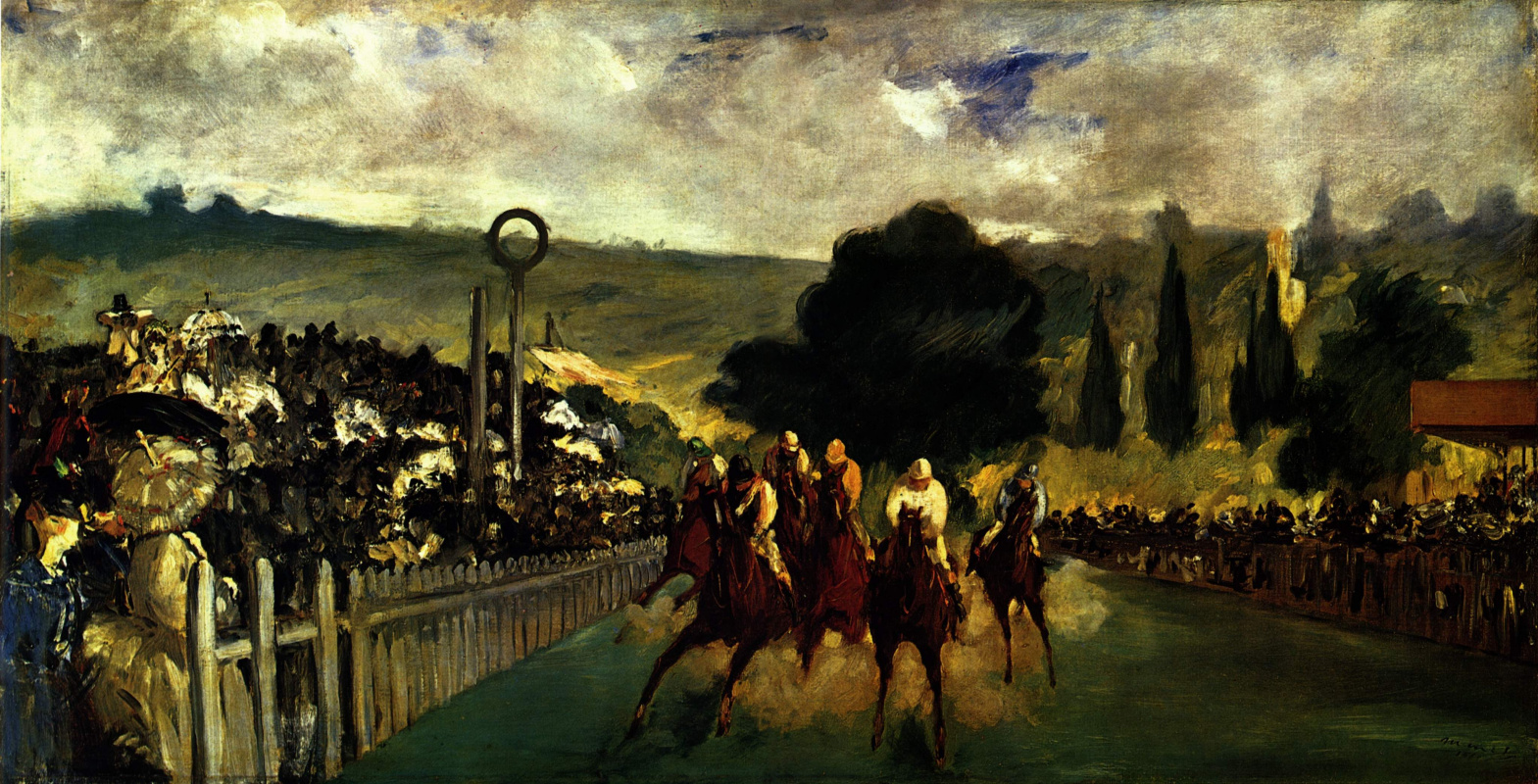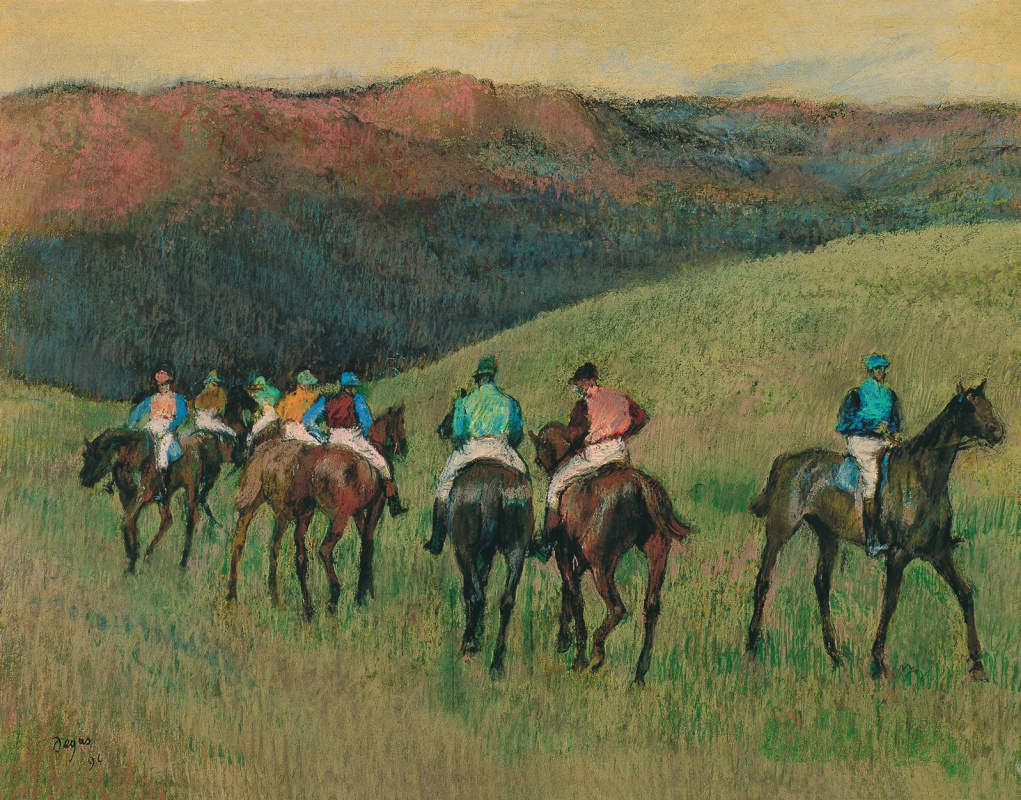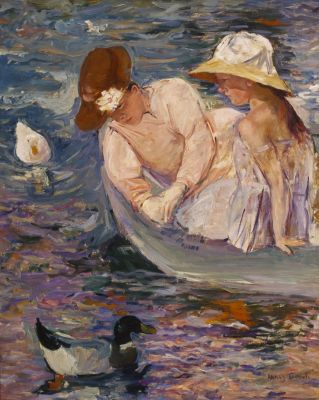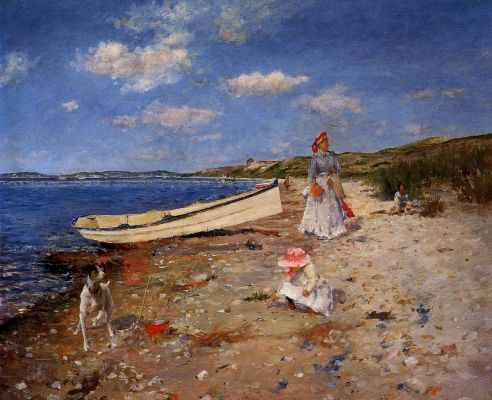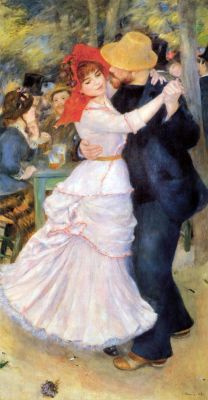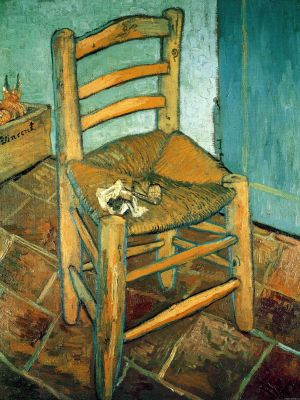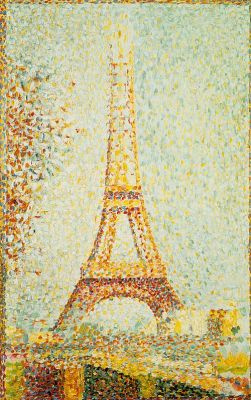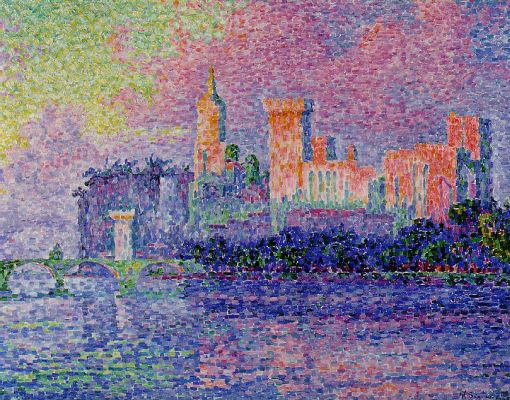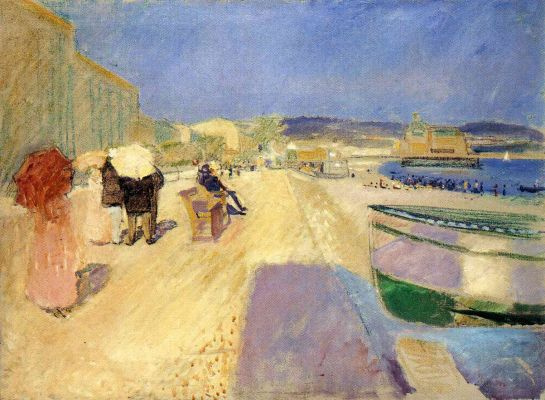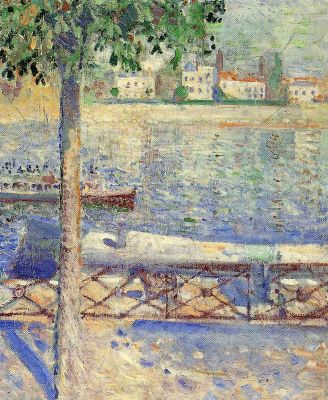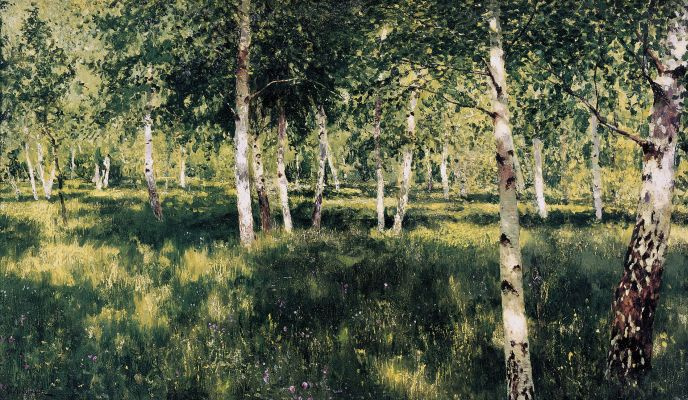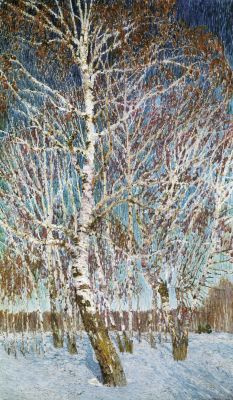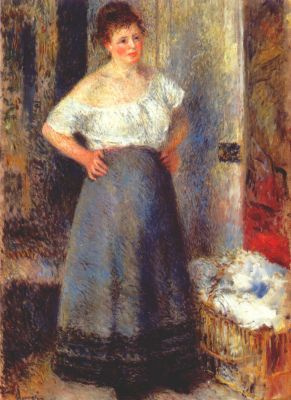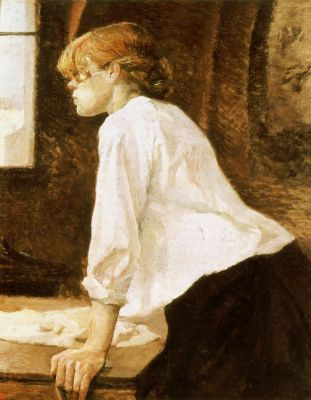No doubt, you know about Impressionism a lot: you could mention the names of the famous artists and find with ease the exhibition at museums with gleaming water surface and the same image painted in different time of the day and of course you know the scandalous history of the First Impressionist Exhibition and could distinguish Monet and Manet. So, it is high time to switch to the next level: some additional details you would like to know about Impressionism.
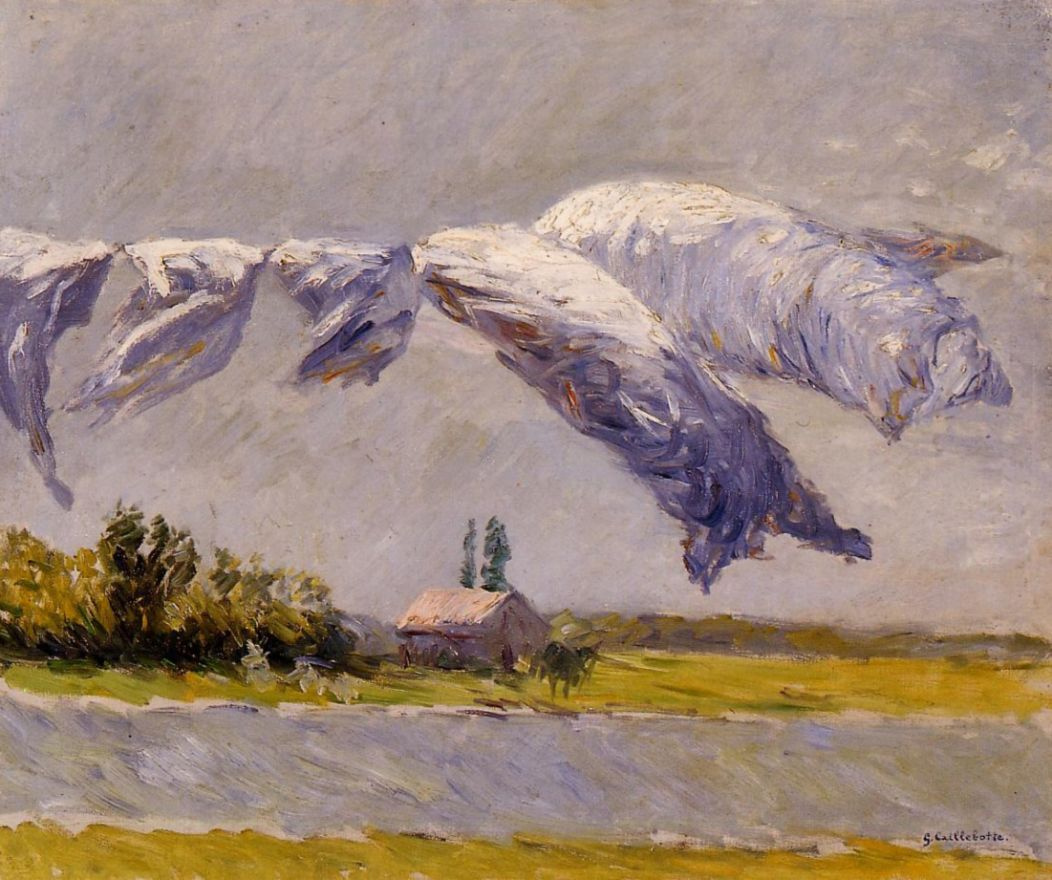
1. What events in France by 1874 triggered the emergence of so many impressionist artists? May be it was some special document issued by the Academy of Art.
No doubt the Academy of Art contributed a lot into changes in the art of that time. Its role in the Impressionism development could be clearly defined as the antagonistic one. Though, the real reason is different. The real reason could be a waste water disposal.There were no sewers in Paris until the mid XIX century; the city people used chamber pots and gutters ran along each street. Both in the capital city and in a village French people lived and worked in the same way like they did hundreds years ago. In 1853 Baron Georges-Eugène Haussmann was the prefect of the Seine Department in France and that time the modernization of Paris began. Napoleon III after his trip to London wanted to turn Paris into a modern and clean city with wide streets and avenues like London was. Besides, the streets had to be reconstructed and become much wider in order to make erection of barricades inconvenient in case of new revolution.
In some years labyrinths of narrow streets, blind alleys, yards with orchards where city people grew different garden staff turned into a net of wide boulevards and avenues (some of them were 30 meters width). New large bridges, the railroad, city parks and the first race track appeared. The population of Paris had doubled in 20 years. Those years were very exciting and had an impact on the art of that time. Artists wanted to depict in their canvases everything they witnessed. New cities, new people and new entertainments had been depicted in their oeuvre.
2. What had artists painted before the innovations? Were their subjects, people, landscapes different?
Now is the time to say a word or two about the Academy of Fine Arts. Since king Louis XIV issued the decree to hold the annual art exhibition the Salon, or rarely Paris Salon, anything hardly had been changed. First 200 years the exhibition was essentially for the graduates of the Academy of Fine Arts and its tutors and only since 1791 artworks of artists who gained a success were exhibited. The same tutors selected artworks for the exhibition. They were the jury deciding who could be enrolled into the Academy of Fine Arts. A painter whose artworks were approved for the exhibition at the Salon (the approval was made by the same Academicians; they were omnipresent) could be commissioned for some state order: either to paint a church or some state building. After that his recognition followed, then money and own painter’s studio and students appeared and also he was privately commissioned. About 300 years the Academy had been a citadel of traditional painting.Toward the middle of the XIX century the basic principles at the Academy included:
— the smoother the surface of a painting the better work of an artist revealing his finest artistry;
— the subjects of painting had to be historical, Ancient Greek Gods and Goddesses were preferable (they could be depicted nude), landscapes with virgin forests were welcomed;
— odalisques, oriental harems, allegoric figures, depiction of prehistoric life (due to the popularity of archaeology) were also permitted.
— the smoother the surface of a painting the better work of an artist revealing his finest artistry;
— the subjects of painting had to be historical, Ancient Greek Gods and Goddesses were preferable (they could be depicted nude), landscapes with virgin forests were welcomed;
— odalisques, oriental harems, allegoric figures, depiction of prehistoric life (due to the popularity of archaeology) were also permitted.
3. Who was the leading Impressionist artist? Who formulated main principles and proselytized everybody?
The artist, who later was considered one of the prime movers in the Impressionism, actually had not shared the ideas of this movement and did his best to avoid being reckoned among them. The first painter who dressed an odalisque in a robe of a Parisian prostitute and Greek gods in frock-coats and top hats was Édouard Manet. He started painting horse racing and dancing in the city park, barflies, Spanish dancers and even road repairs.4. Good, it is clear. Manet was not an impressionist artist. May be somebody knows, how could you recognize an Impressionist painting?
The intention to paint on the spot, to depict fast-changing weather, people in awkward intermediate positions making routine work impacted the emergence of a new technique. A new method of painting was required, the one which could allow capturing the transient effects of light and color. Air and light became the main subject matters.At the time when the emerging impressionist artists were thinking over their own independent exhibition, journalist and critic Theodore Duret (1, 2) in his letter to Camille Pissarro begged to select paintings with subject matters and something like a composition, the paintings produced more perfectly and not so freshly painted. Nobody followed his recommendations. Subjects in the paintings by the impressionist artists had no sense and even insulting. The first theoretical treatment of the Impressionism was superficially formulated by one of Renoir’s friend. He said that Impressionism was striving to treat a subject for the sake of its paint layer but not for the subject’s sake itself.
Jockeys in training
1894, 47.9×62.8 cm
The Impressionists achieved special vibrant images with several techniques: seeking light effects they rejected dark shadows, declined the contours of the subjects and blend them with the environment, exposing the local color to air; an individual color was introduced into the space with the separate visual brushstrokes; they rejected superfluous details impossible to be caught by a hasty glance. Claude Monet in Venice was puzzled how artists managed to paint in detail a brick laying of distant buildings not seen through a humid and tough air in Venice.
5. If subjects in the painting are unclear and blurred, then could it be Impressionism?
An Impressionist artwork is peculiar for its light; a bright sunny light makes the image vibrant and twinkling; bright stage lighting draws faces of singers and ballet dancers. Blurred outlines and vagueness is one of the peculiarities of the impressionist painting. The sky could be vibrant in the paintings by El Greco (a piece by El Greco could be confused with Monet), London could be misty by Turner or a gouache sketch by Delacroix could be also blurred.All the painters did the same: they roamed around the forest, spent their time on the banks of the rivers drawing sketches and paintings of the wildlife around them studying it in such a way. Then they brought their sketches to their salons and workshops and produced artworks according to their knowledge applying rules of composition and other valuable knowledge. At the same time the impressionists claimed that the first impression of what they saw was real and important and it was not a fruit of their imagination and mental work of an artist.
6. If a young artist wanted to paint in the Impressionist manner would he need a collection of dogmas or a special reference book? Does some code of practice exist?
The leading theoretician of a new wave in the art, the most far seeing and talented mentor of Impressionism was Camille Pissarro. He supported the artists who were treated with contempt; Paul Cézanne and Paul Gauguin could hardly established themselves as recognized artists and become confident in their artistic strength without his encouragement and support. So, one could learn the "right impressionism" following his recommendations (they were recorded by a young artist from Pissaro’s circle):— Consider the motif from the point of view of a form and a color but not a drawing. No need to outline the form, which could be revealed in some different manner. An accurate drawing is dry and deteriorates the impression of integrity, it demolishes all possible feelings. Do not highlight the contours of subjects; it is a brushstroke correct by the color and strength, which creates a painting.
— Paint the essential character of things. It is only by drawing often, drawing everything, drawing incessantly, that one day you discover something in its true character. Do not take care of technique.
When painting, choose a subject, look what is to your left and what is to your right and work on all at the same time. Do not paint piece by piece, do it in the same breath laying paints by strokes of correct color and strength, keeping in your mind what is nearby. Paint small strokes and try fixing your impression at once. An eye has not to be focused on one point but capture the whole, tracking the colors reflection on everything around.
— Carefully keep an eye on the aerial perspective from the front line to the horizon, on the reflections of the sky and leaves.
— Do not be afraid to lay colors, progressively finishing up your artwork. Do not work according to the rules and principles but paint what you see and what you feel. Paint profusive and with certainty since you should not loose your first impression. Do not be afraid of nature, you have to be brave even risking to overreach yourself and make mistakes. The only your teacher is nature; it is the only one you have to consult with.
— Carefully keep an eye on the aerial perspective from the front line to the horizon, on the reflections of the sky and leaves.
— Do not be afraid to lay colors, progressively finishing up your artwork. Do not work according to the rules and principles but paint what you see and what you feel. Paint profusive and with certainty since you should not loose your first impression. Do not be afraid of nature, you have to be brave even risking to overreach yourself and make mistakes. The only your teacher is nature; it is the only one you have to consult with.
7. Enchanting subjects prevail in the impressionist paintings, like dancers, bathers and flowers. Have the impressionist artists been charming kids in their childhood? Could some of them be thugs, drunkards or troublemakers? Could they quarrel with each other?
The impressionists hated the word "subject-matter", they used the word "motif". For instance, Degas often sought his motifs in brothels as well as in the theaters or horse racing. He was ill-tempered: a person of keen intellect, cynic and smart aleck, a few artists could avoid his contemptuous remarks. He brought his proteges to each of eight Impressionist Exhibitions and the other artists desperately opposed the showcases of such questionable young painters, Degas’s students, scroungers of the worst description (according to Gauguin’s remarks as to Degas’s lobbying the paintings by Raffaëlli to be included in the exhibition: A Complete Life, biography of the latter). That was so much the case that Monet, Renoir, Caillebotte and Sisley took their artworks, slammed the door and declined to participate in the exhibition.At the time when Pissarro took interest and practised the technique of pointillism he invited Seurat and Signac to showcase their paintings at the Salon and after scandals and competing accusations the impressionist artists agreed to exhibit all the pointillism
artworks but under separate section. As to Monet, he shut the door with a bang again. By the last Salon the impressionist artists revealed much more discordance than common goals. Van Gogh compared the situation with a devastating civil war in the community where each member attacked the others with a rage worthy of a better cause.
They argued violently whether or not to participate in the Salon and separated into two repugnant groups as to the Dreyfus Affair and because of their insult and anger the artists brought back artworks once having been presented them by their mates. Though, there were no hard drinkers among the impressionist artists. When they had been young they had been so poor that had bargained their paintings for shoes and could not pay for their meal. Then all of them got married which they could hardly afford. For instance, Pissarro had 8 children, Claude Monet adopted 6 children, Renoir had 3 sons, Berthe Morisot had a daughter, Sisley had two children. Caillebotte, who was single and had no children, instead of hanging about restaurants and coffee shops, build boats, collected stamps and planted orchids. When they were 40 or 50, they had to work hard without recognition and payment, selling their artworks for next to nothing and preserving their inextirpable belief in their rightness.
They argued violently whether or not to participate in the Salon and separated into two repugnant groups as to the Dreyfus Affair and because of their insult and anger the artists brought back artworks once having been presented them by their mates. Though, there were no hard drinkers among the impressionist artists. When they had been young they had been so poor that had bargained their paintings for shoes and could not pay for their meal. Then all of them got married which they could hardly afford. For instance, Pissarro had 8 children, Claude Monet adopted 6 children, Renoir had 3 sons, Berthe Morisot had a daughter, Sisley had two children. Caillebotte, who was single and had no children, instead of hanging about restaurants and coffee shops, build boats, collected stamps and planted orchids. When they were 40 or 50, they had to work hard without recognition and payment, selling their artworks for next to nothing and preserving their inextirpable belief in their rightness.
8. Post-Impressionism is something very much alike Impressionism but emerged after the Eighth Impressionist Exhibition, isn't it?
Post-Impressionism is the wave of art emerged after Impressionism not chronologically but conceptually. Paul Cézanne, for instance, exhibited his artworks at the First Impressionist Exhibition, painted in the open air with Pissarro, took part in the meetings at the Café Guerbois but his artworks were clearly different and individual. When painting portraits, Cézanne placed things in some special order and did not allowed his models moving them, marked the traces of the chair on the floor with a piece of chalk to place the model on the same place next day, nothing occasional or instantaneous was admitted.Post-Impressionists (including Cézanne, van Gogh, de Toulouse-Lautrec, Gauguin) sought an essential essence of subjects at any time and season but not an eluding light. On the contrary to the impressionist vivid and vague motifs, the subjects in the post-impressionist paintings yielded intentional weight and volume, they were saturated with color and the features of the portraits were deformed and revealed the internal world of the models.
We cannot say that Post-Impressionism
was a school or a movement, the artists have never entitled themselves as Post-Impressionists, each of them possessed their own technique and manner. They sought the artistic truth and fathered the development of the art in the XX century.
9. What is Neo-Impressionism and what is the difference between Neo-Impressionism and Impressionism?
Unlike the post-impressionists who had drafted off Impressionism and followed their own paths, the neo-impressionist artists were the direct followers of Monet, Renoir and Pissarro.The neo-impressionist artists were those, who shared the ideas of Impressionism so enthusiastically and passionate that they implemented them in purely technical extract. Georges Seurat and Paul Signac, fathers of Neo-Impressionism (often called Pointillism) contributed new scientific and practical optical experiments to artistic findings of Impressionism. They excluded contingency and unpredictability from painting principals, the pointillists adopted the impressionist practice of separate patches of pure colors, which were blended in the vision of viewers but not on the artist’s palette.
This approach became leading and inspiring for the neo-impressionists. They discovered their own style of painting with small or large patches of pure colors and at a certain distance from a painting these patches were blended and gave the needed hue.
10. Nowadays you can find paintings of flowers in the impressionist style at any art-fair all over the world. Were Impressionist only in France in the XIX century?
Actually in the late XIX century you could find an impressionist artist everywhere in any European country, including Japan, the USA and Russia. In 1886, art dealer Paul Durand-Ruel hold the Impressionist Exhibition in New York regardless the generation of American artists painted in the Impressionist technique, who had visited Paris and brought back to their country the ideas of a new wave in the art. Japan, after having disclosed to Europe its woodcuts, netsuke, fans and screens, experienced a reverse impact; pilgrims from the Land of the Rising Sun went to the continent, traveled on foot just to visit studios of artists and even to stay there for some while silently watching paintings of growing old great impressionist artists. Generation of impressionist painters emerged in Japan as well.So, nothing could happen in the art without Impressionism; every other modernist painter, founder of an avant-garde movement and artist community inevitably came through the period of impressionist experience and worked in the open air. Lawyer Wassily Kandinsky made a decision to become a painter after he had seen the Haystacks by Claude Monet at the exhibition in Moscow; and at the beginning he followed the impressionist style. Further cubist Picasso, suprematist Malevich and expressionist Edvard Munch enthusiastically started with exploration of light and air.
Oh, we see a question in your eyes. It is very easy to understand the difference between Impressionism and Expressionism comparing two pieces by Munch — a person who told about himself: "From the moment of my birth, the angels of anxiety, worry, and death stood at my side, followed me out when I played, followed me in the sun of springtime and in the glories of summer. They stood at my side in the evening when I closed my eyes, and intimidated me with death, hell, and eternal damnation"
Leftward: Impressionism; the artist switches off his brains and is focused on his visual impressions of what he sees in reality. To the right: Expressionism; the artist expresses his own emotions.
Oh, we see a question in your eyes. It is very easy to understand the difference between Impressionism and Expressionism comparing two pieces by Munch — a person who told about himself: "From the moment of my birth, the angels of anxiety, worry, and death stood at my side, followed me out when I played, followed me in the sun of springtime and in the glories of summer. They stood at my side in the evening when I closed my eyes, and intimidated me with death, hell, and eternal damnation"
Leftward: Impressionism; the artist switches off his brains and is focused on his visual impressions of what he sees in reality. To the right: Expressionism; the artist expresses his own emotions.
11. Were Impressionist artists in Russia? Were they at the same time with Peredvizhniki?
The Russian Impressionism Museum exists, though, we cannot find a clear and simple answer, whether Impressionism exists in Russia or not. Russia has missed the epoch of Impressionism with exhibitions, public discussions and caricatures in newspapers. At the same time you can find impressionist artworks which are masterpieces, some of them you can enjoy below.Devoted, successive and tough impressionist among Russian artists was probably only one painter, his name was Konstantin Korovin. He was rumored to put up a swindle to assign himself the fame of the painter of the first Russian impressionist artwork (refer to description of the Portrait of a Chorus Girl by Korovin).
When Vasily Polenov examining the paintings by his students Korovin and Levitan asked them whether they knew something about Impressionism and whether they belonged to that movement, they simply shrugged their shoulders. Serov came to Impressionism himself (on returning from Europe he painted the Girl with Peaches, however, he had visited Venice to copy the old masters but not Paris) and unlike his friend Korovin he painted in the Impressionist manner from time to time.
We cannot but mention that Russian painters had an access to any information. They regularly visited Europe. Collectors Morozov and Shchukin acquired impressionist artworks for their collections and exhibited them in Russia. Then what hindered the development of Impressionism in Russia? May be it was another world outlook. Renoir was happy that Impressionism at last allowed a painter to be free from a subject matter and to depict flowers without any inner sense. The Russian painter could not simply paint poplars under different light and splashes of water. He needed to express himself.
When it comes to laundresses, for example, French impressionists adored painting them. Let’s compare paintings by Renoir, Degas, Toulouse-Lautrec and Arkhipov. The French artists were fascinated with the light coming through the window, blushes mantled on the cheeks of girls, their poses; they looked at a laundress in the same way they looked at an actress in a nightclub or at a ballet dancer at the theater. The Russian artist applied all his talent to make a viewer suffocating because of steam and feeling the same pain in his legs as the laundress in the painting could suffer.
When Vasily Polenov examining the paintings by his students Korovin and Levitan asked them whether they knew something about Impressionism and whether they belonged to that movement, they simply shrugged their shoulders. Serov came to Impressionism himself (on returning from Europe he painted the Girl with Peaches, however, he had visited Venice to copy the old masters but not Paris) and unlike his friend Korovin he painted in the Impressionist manner from time to time.
We cannot but mention that Russian painters had an access to any information. They regularly visited Europe. Collectors Morozov and Shchukin acquired impressionist artworks for their collections and exhibited them in Russia. Then what hindered the development of Impressionism in Russia? May be it was another world outlook. Renoir was happy that Impressionism at last allowed a painter to be free from a subject matter and to depict flowers without any inner sense. The Russian painter could not simply paint poplars under different light and splashes of water. He needed to express himself.
When it comes to laundresses, for example, French impressionists adored painting them. Let’s compare paintings by Renoir, Degas, Toulouse-Lautrec and Arkhipov. The French artists were fascinated with the light coming through the window, blushes mantled on the cheeks of girls, their poses; they looked at a laundress in the same way they looked at an actress in a nightclub or at a ballet dancer at the theater. The Russian artist applied all his talent to make a viewer suffocating because of steam and feeling the same pain in his legs as the laundress in the painting could suffer.

The other detail. Regardless the artworks by the artists who started painting in the impressionist manner themselves (in fact, at the same time with French impressionists), the pieces of art considered to be included to the Russian Impressionism, were produced at the turn of the century and later in the first quarter of the XX century. By that time Modernism
conquered Europe, a lot of new -isms appeared, and artists would like to try working in all the styles. One could not speak about cleanness of styles. That is why speaking about the Russian Impressionists we have to say "basically, it is not Impressionism in its full meaning".
When it comes to the first Russian impressionists along with Peredvizhniks, the only fact could explain everything. Pavel Tretyakov purchased the Girl Covered by the Sun by Serov for his collection. At the earliest dinner Vladimir Makovsky one of the founders of the Association of Travelling Art Exhibitions reacted on the purchase asking Tretyakov: "Since when do you vaccinate your gallery with syphilis?"
When it comes to the first Russian impressionists along with Peredvizhniks, the only fact could explain everything. Pavel Tretyakov purchased the Girl Covered by the Sun by Serov for his collection. At the earliest dinner Vladimir Makovsky one of the founders of the Association of Travelling Art Exhibitions reacted on the purchase asking Tretyakov: "Since when do you vaccinate your gallery with syphilis?"
12. Romanticism , for example, was represented by artworks by Delacroix, poems by Byron and music by Tchaikovsky. What about Impressionism, does it include only the fine arts?
Romanticism is a very strong cultural movement, which ideas were perfectly implemented in any artistic language, including music, literature or painting. Feelings and emotions, rebel, passion, intuition, nature, dreams and fantasy opposing mind and pragmatism were clearly and naturally defined in poems, paintings and music.Impressionism is a movement first emerged and developed in painting only. The value of fast impression, lack of a subject matter and declining of an idea was difficult to be implemented in literature. We could say about some impressionist methods applied to literary works by some authors, like Émile Zola, Guy de Maupassant, Goncourt brothers and Paul Verlaine. Description of scenes in novels was built on smells, sounds, colors, change of light and could be assigned to Impressionism. The world around a character changing colors and tones depending on the character’s mood is also Impressionism. At the same time, the pure impressionist literature has not been developed because of the author’s need to express himself or to reveal a symbolic meaning and hidden essence of the objects behind fast impressions.
Music could easily avoid subject matters and mandatory senses, so we can say about Claude Debussy, Maurice Ravel and in some way Alexander Scriabin and Igor Stravinsky, that they were impressionist composers. Impressionist composer produces etudes symphoniques but not complex dramatic symphonies, he tells about fast impression like in watercolors, opulently with poor means, in the way Renoir has dreamed about. The impressionist music is tender, gentle, with an elusive rhythm and short flowing phrases.
All the revolutionary changes for which a number of artists has been fighting for years, has been done in the plastic art by a single person, his name is Auguste Rodin. His bronze and marble sculptures are like real people captured in intermediate passionate poses. Expression of their faces reveal fast and tense, difficult to be caught emotions. He mounted twisted figures in coarse marble like impressionist artists left clean, unpainted pieces of canvases.
Impressionism became a significant reload of the faded, exhausted and looped in its images and rules academism and in this way it had changed the world culture.
Impressionism became a significant reload of the faded, exhausted and looped in its images and rules academism and in this way it had changed the world culture.
The title illustration: Gustave Caillebotte, The Laundry Drying.
The Authors: Anna Sidelnikova, Natalia Kandaurova
The Authors: Anna Sidelnikova, Natalia Kandaurova









